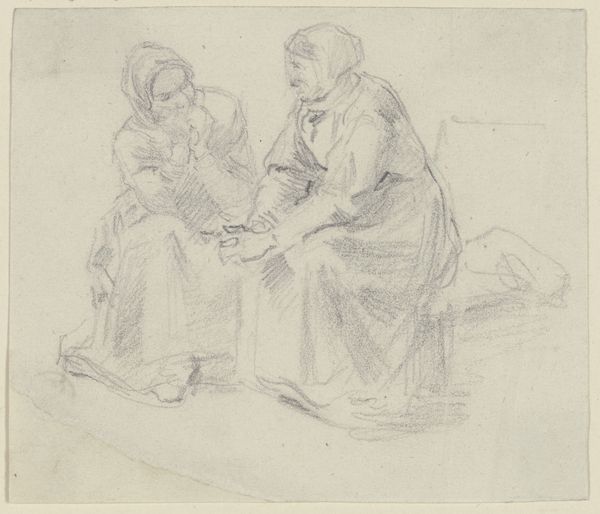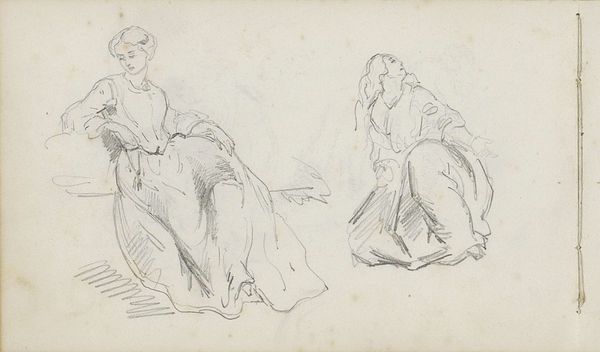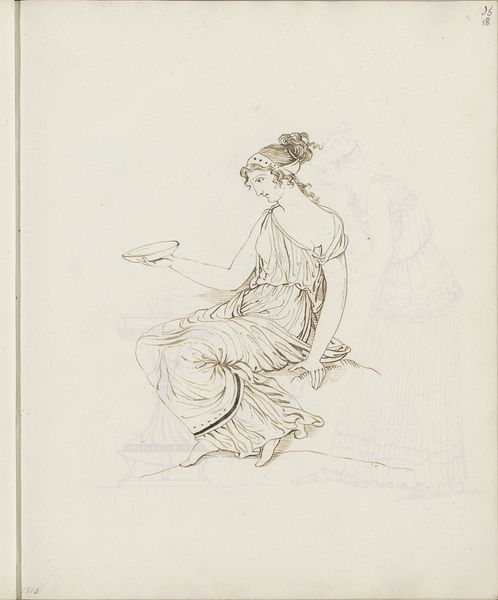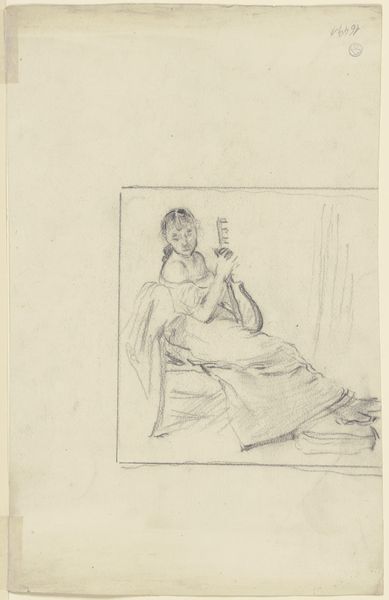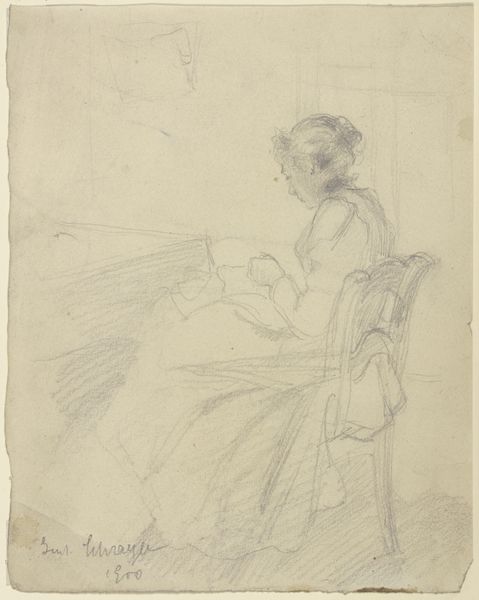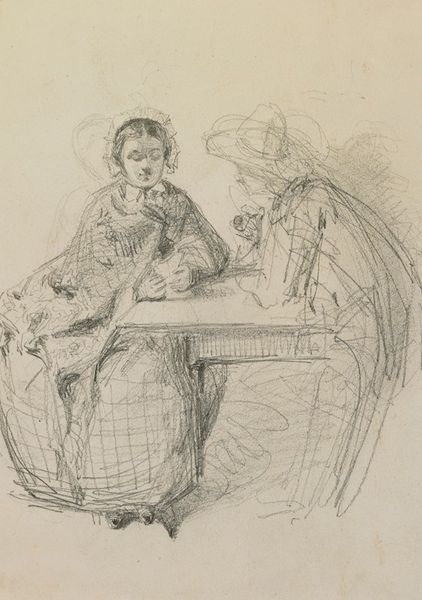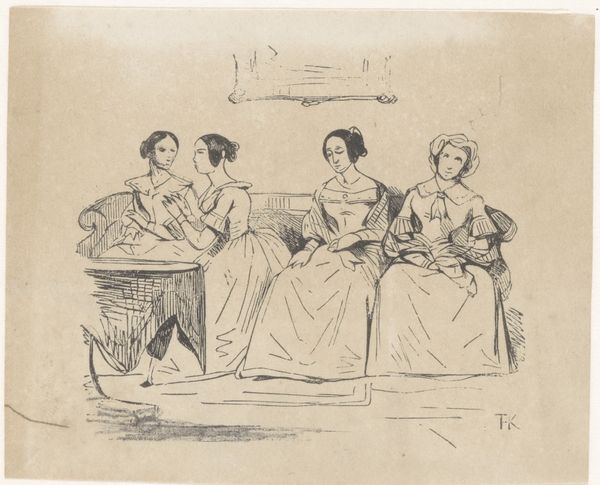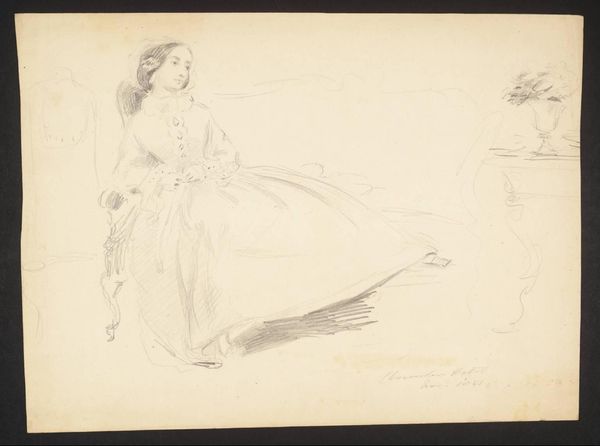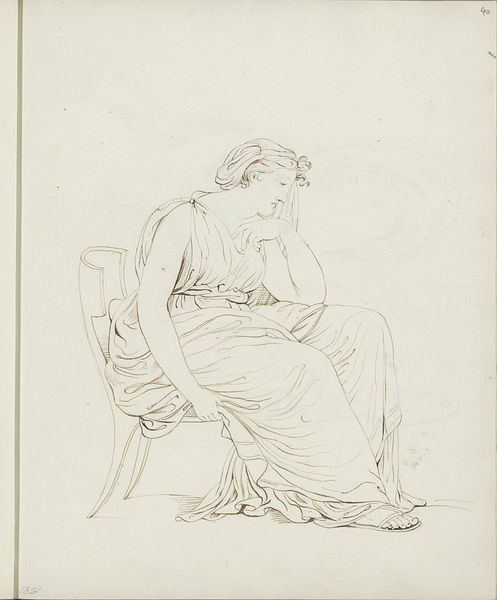
drawing, paper, pencil
#
portrait
#
pencil drawn
#
drawing
#
woman
#
16_19th-century
#
pencil sketch
#
figuration
#
paper
#
pencil drawing
#
romanticism
#
pencil
#
portrait drawing
#
history-painting
Copyright: Public Domain
Curator: Looking at this pencil drawing from the 1830s by Theodor Pelissier, entitled "Mädchen aus Capri" or "Girls from Capri", the most immediately striking aspect to me is the lightness and almost ethereal quality of the figures. It feels intimate and somewhat melancholic. Editor: Light indeed. It also immediately makes me think about the grand tour and the orientalism, the depiction and the representation of women of color and the exoticism in early 19th century, and the use of portraiture within it. But, getting to the technicals, how was this sketch actually produced? Curator: The beauty of this piece lies precisely in its simplicity. Pelissier uses a humble pencil on paper to create incredibly detailed representations. Note the way he renders the drapery of their dresses. The shading is delicate yet effectively suggests volume and texture. Also, it is made apparent from the under drawing, how meticulous and considered the drawing actually is! Editor: Indeed! and the act of sketching itself allowed the artist to engage with his subjects. Looking at these girls sitting or perching with clay water vases/containers that could’ve easily been part of the artist’s possession to emphasize the making of, how the labor process here intersects with representation. Also, notice how he stages and arranges women as the aesthetic consumption of Capri. Curator: Yes, their poses are quite studied, very reminiscent of classical portraiture. The emphasis isn’t necessarily on a hyper-realistic representation, but more on conveying a particular mood and ideal, and in my eye, succeeding completely in its intent. The artist made several renditions for compositional study. You can even see some barely sketched figures in the background! Editor: And there's a political context here too; what did it signify to portray women in particular roles within this colonial frame? Are these portrayals promoting tourism, or commodifying specific groups? Curator: That is definitely an interesting point of view to consider, the girls as "objects" in their natural context, arranged to stage an idea to emphasize an environment in the romantic eye of that period. Editor: Well, these are all aspects worth reflecting upon as we reconsider artworks within intersectional power structures and historical frames of reference. Thank you for shining light on these production matters. Curator: Absolutely. Considering the circumstances and materiality definitely offers new insights into this otherwise quaint, romantic era portrayal of women.
Comments
No comments
Be the first to comment and join the conversation on the ultimate creative platform.
